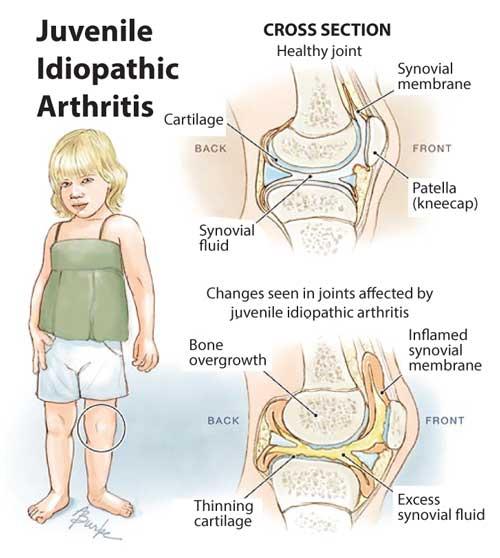09 Jul 2021 - {{hitsCtrl.values.hits}}
 With all ongoing developments in the world it is unfortunate to note how at least the young cannot be spared of certain ailments that are more commonly observed only among the elderly. Juvenile Idiopathic Arthritis (JIA) is one such joint disease that could ail the young and affect the quality of life if not treated properly. Speaking to Health Capsule Dr. Himantha Atukorale, Consultant in Rheumatology & Rehabilitation and Fellow of American College of Rheumatology, explains how Juvenile Arthritis could take a toll on young patients and what measures parents could take to address the problem on a positive note.
With all ongoing developments in the world it is unfortunate to note how at least the young cannot be spared of certain ailments that are more commonly observed only among the elderly. Juvenile Idiopathic Arthritis (JIA) is one such joint disease that could ail the young and affect the quality of life if not treated properly. Speaking to Health Capsule Dr. Himantha Atukorale, Consultant in Rheumatology & Rehabilitation and Fellow of American College of Rheumatology, explains how Juvenile Arthritis could take a toll on young patients and what measures parents could take to address the problem on a positive note.
“Juvenile idiopathic arthritis also known as JIA is a joint disease seen in children and adolescents. The term ‘juvenile’ is medically used for children who are 16 years or younger. Hence if a child of above age presents with joint symptoms lasting usually for over 6 weeks or more we tend to evaluate for JIA” explained Dr. Atukorale.
Symptoms and diagnosis
When asked if the condition is observed commonly in Sri Lanka Dr. Atukorale said that the prevalence of JIA in Sri Lanka is not known currently. However elaborating on the symptoms he said that symptoms could vary in addition to the presence of six different sub types of juvenile arthritis.
“In a subtype named Systemic Arthritis the children have fever, joint swelling, skin rashes, organ enlargement etc. Some subtypes have arthritis or joint inflammation/ swelling in 5 or more joints (Polyarticular JIA) and some have joint involvement in only 4 joints or less (Oligoarticular JIA)” he added.
In the case of Psoriatic JIA one may observe psoriasis skin rash with joint swelling. The other two other subtypes are namely Enthesitis related JIA and Undifferentiated JIA. Rarely some children may have concurrent eye swelling termed Uveitis with arthritis.
Treatment and Prevention 
There is no medical remedy to prevent juvenile arthritis in children. However, Dr. Atukorale noted that there are excellent, established medical remedies to control JIA. “After performing specific blood tests and sometimes X-rays/ scans, the treating doctor will decide on medication. Drugs that are used in JIA are non-steroid anti-inflammatory drugs, disease modifying drugs, steroids and sometimes biologic agents” he said.
Additionally, there could be other reasons thought to trigger juvenile arthritis such as immune mechanisms and exposure to environmental factors.
Complications and impact on quality of life
“If there is long standing joint involvement this could cause deformities of limbs and disability. Eyes can rarely be affected leading to problems in vision,” Dr. Atukorale noted.
Moreover, he warned of the possibility of issues that may rise while schooling, lack of participation in sports, disease related stigma from peers and reduced psychological well-being in young patients triggered due to the Systemic JIA subtype and other sub types.
“However, as there is medication which controls the disease quite well, we encourage all parents to facilitate long-term follow ups for these patients. Sport is known to enhance the quality of life in JIA children” he added.
Take home message
On a final note Dr. Atukorale explained that JIA can cause much confusion within parents as this is easily mistaken for an injury occurring during play. Accordingly, there are several conditions such as growing pains and hypermobility disorder which can be difficult to differentiate from juvenile arthritis. “I advise parents to be on alert if a child complaints of persistent limb pain for several weeks and especially if a younger child displays a limp. Early diagnosis is the key to treating JIA” he advised.
21 Dec 2024 2 hours ago
21 Dec 2024 2 hours ago
21 Dec 2024 3 hours ago
21 Dec 2024 6 hours ago
20 Dec 2024 20 Dec 2024